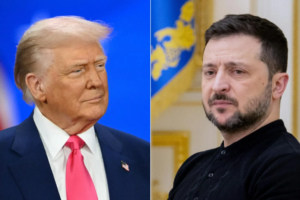In a landmark agreement signalling deepened economic and strategic ties, the United States and Ukraine have signed a long-awaited deal granting Washington access to key natural resources in Ukraine. The agreement, months in the making, establishes an investment framework that Kyiv hopes will anchor continued U.S. support amid its ongoing war with Russia.
The deal, now published by the Ukrainian government, outlines a joint effort to harness Ukraine’s mineral, oil, and gas wealth while simultaneously addressing geopolitical sensitivities—including Ukraine’s path to EU membership and questions surrounding U.S. military support.
Here are seven major takeaways from the agreement:
-
No Ukrainian Repayment for U.S. Aid
Despite previous suggestions from U.S. political figures—most notably former President Donald Trump—that Ukraine should repay the estimated $350 billion in aid received during the war; the deal includes no provision for debt repayment. Ukrainian Prime Minister Denys Shmyhal confirmed that no financial “payback” is required under the agreement, a notable concession by Washington that reinforces its role as a committed, if cautious, ally.
-
Agreement Includes Oil and Gas Access
Though widely framed as a minerals-focused pact, the agreement explicitly includes provisions for oil, natural gas, and other hydrocarbons. This represents a strategic expansion from earlier drafts, which focused solely on critical minerals such as lithium and titanium.
While ownership of the resources remains with Ukraine, the U.S. gains joint access for exploration and development. U.S. officials noted that peace would increase the commercial viability of these assets, hinting at a broader incentive to support a faster end to the conflict.
-
No Conflict with EU Accession Plans
Concerns had emerged in Kyiv that the agreement might conflict with Ukraine’s ambition to join the European Union, especially due to existing raw materials agreements between Ukraine and the EU. However, the agreement specifically acknowledges Ukraine’s EU aspirations and commits to aligning with any future EU obligations.
The text also affirms that the U.S. will negotiate in good faith if Ukraine needs to revisit any terms due to its EU membership path. Moreover, the U.S. has pledged to support additional technology and investment transfers from both EU and international partners.
-
U.S. Military Support Tied to Economic Deal
U.S. officials have signalled that the agreement serves as a precondition for continued military assistance, including air defence systems and strategic aid. Ukrainian First Deputy Prime Minister Yulia Svyrydenko, who signed the deal in Washington, noted that the agreement lays the groundwork for new defense cooperation.
This framing reintroduces a quasi-conditional military commitment into U.S.-Ukraine relations—especially important given the evolving political landscape in Washington.
-
No Formal Security Guarantees from the U.S.
Notably, the agreement does not contain formal security guarantees. This omission reinforces the fragility of U.S. commitment should political leadership or priorities shift.
While President Biden has historically maintained strong support for Ukraine, President Trump and other Republicans have expressed scepticism about long-term military involvement. The current deal links U.S. support more to economic interest than to defence policy, a dynamic that raises questions about the sustainability of the partnership.
-
Profits May Be Reinvested in Ukraine—for Now
A key detail highlighted by the Ukrainian government is a provision stating that profits from the investment fund will be reinvested in Ukraine’s economy for the first 10 years. These funds are intended to support postwar reconstruction and new infrastructure projects.
However, this clause does not appear in the formal text of the agreement signed in Washington. Deputy Prime Minister Svyrydenko stated on social media that the reinvestment commitment would be formalized in a future “technical agreement.”
After the initial 10-year period, profits may be shared between Ukraine and its international partners, including the U.S.
-
U.S. Frames Deal as Compensation and Partnership
In U.S. political circles, the deal is also being marketed as a form of compensation for America’s financial and military contributions to Ukraine. U.S. Treasury Secretary Scott Bessent told Fox News that the agreement represents an opportunity for the American people to “participate” in Ukraine’s recovery and “get some of the funding and weapons compensated.”
At a White House briefing, Deputy Chief of Staff Stephen Miller went further, describing the agreement as “repayment” for the hundreds of billions of dollars in taxpayer funds directed toward the war effort.
Looking Ahead
While the Kremlin has yet to respond to the announcement, analysts say the deal could trigger geopolitical pushback. However, Kyiv views it as a strategic win—ensuring continued Western alignment while simultaneously advancing its EU membership goals and economic recovery.
For Washington, the deal balances diplomacy, economics, and national interest—tying future military support to economic gains in a post-war Ukraine.
New Daily Prime will continue to monitor developments on this historic agreement and its implications for the future of the war, regional stability, and international investment in Ukraine’s recovery.


